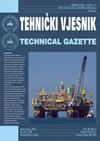Effect of Different Water-Binder Ratios and Fiber Contents on the Fluidity and Mechanical Properties of PVA-ECC Materials
IF 1.4
4区 工程技术
Q3 ENGINEERING, MULTIDISCIPLINARY
引用次数: 0
Abstract
: With the development of fiber-reinforced cement composites, the diversity and complexity of application scenarios require enhanced strength and ductility and tough materials in practical engineering. To explore the effects of different water-binder ratios and fiber contents on the fluidity, bending resistance, tensile properties, fracture toughness, and fracture behavior of polyvinyl alcohol (PVA) fiber cement composites, several groups of high ductility test blocks (PVA-engineering cementitious composites (ECC)) with different mixing ratios were designed in this study. Based on the expansion degree, the mechanical experimental data, and the electron microscopy scanning image results, K -value analysis was performed on the strain hardening strength criterion. The effect of the water–binder ratio and the fiber dosing on the PVA-ECC material was determined. Results show that the greater the water-binder ratio is, the better the fluidity of the ECC matrix is. In the same cement system and at the same water-binder ratio, the fluidity of the ECC paste gradually deteriorates with the increase of the fiber content. The water-binder ratio significantly affects the flexural tensile strength of the composite. The flexural and tensile strengths of the PVA-ECC gradually increase as the water-binder ratio decreases, but the ductility gradually decreases. The water-binder ratio of the substrate directly influences the damage behavior of the fibers within the substrate. With the gradual increase of the water-binder ratio, the fiber at the crack interface gradually changes from pull-out morphology to fracture morphology. The strain capacity and the multi-crack cracking performance decrease. To achieve improved working performance in the actual project, the matrix water-binder ratio should be controlled at approximately 0.45, and the PVA fiber dose of 1.7% is optimal. This study can provide a good reference for不同水胶比和纤维含量对PVA-ECC材料流动性和力学性能的影响
随着纤维增强水泥复合材料的发展,应用场景的多样性和复杂性要求在实际工程中增强材料的强度和延性,增强材料的韧性。为探讨不同水胶比和纤维含量对聚乙烯醇(PVA)纤维水泥复合材料流动性、抗弯性能、拉伸性能、断裂韧性和断裂行为的影响,设计了多组不同掺比的高延性试验块(PVA-工程胶凝复合材料(ECC))。根据膨胀程度、力学实验数据和电镜扫描图像结果,对应变硬化强度准则进行K值分析。研究了水胶比和纤维用量对聚乙烯醇- ecc材料性能的影响。结果表明,水胶比越大,ECC基质的流动性越好。在相同水泥体系、相同水胶比下,随着纤维含量的增加,ECC膏体的流动性逐渐变差。水胶比对复合材料的抗弯拉伸强度有显著影响。随着水胶比的减小,PVA-ECC的抗弯强度和抗拉强度逐渐增大,但延性逐渐降低。基材的水胶比直接影响基材内纤维的损伤行为。随着水胶比的逐渐增大,裂纹界面处的纤维逐渐由拉出形态转变为断裂形态。应变能力和多裂纹开裂性能下降。为了在实际工程中获得更好的工作性能,应将基体水胶比控制在0.45左右,以1.7%的PVA纤维用量为最佳。本文的研究可以为我国医药行业的发展提供很好的参考
本文章由计算机程序翻译,如有差异,请以英文原文为准。
求助全文
约1分钟内获得全文
求助全文
来源期刊

Tehnicki Vjesnik-Technical Gazette
ENGINEERING, MULTIDISCIPLINARY-
CiteScore
1.90
自引率
11.10%
发文量
270
审稿时长
12.6 months
期刊介绍:
The journal TEHNIČKI VJESNIK - TECHNICAL GAZETTE publishes scientific and professional papers in the area of technical sciences (mostly from mechanical, electrical and civil engineering, and also from their boundary areas).
All articles have undergone peer review and upon acceptance are permanently free of all restrictions on access, for everyone to read and download.
For all articles authors will be asked to pay a publication fee prior to the article appearing in the journal. However, this fee only to be paid after the article has been positively reviewed and accepted for publishing. All details can be seen at http://www.tehnicki-vjesnik.com/web/public/page
First year of publication: 1994
Frequency (annually): 6
 求助内容:
求助内容: 应助结果提醒方式:
应助结果提醒方式:


